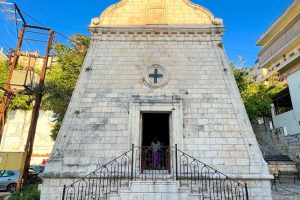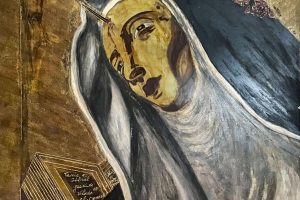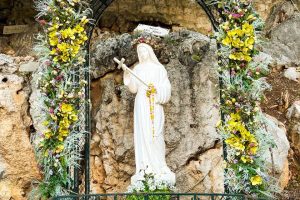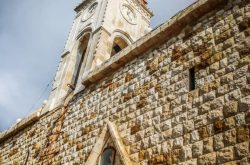Overview
Map
Other Details
كابيلّا القدّيسة ريتا
Jounie Ghadir
Keserwan
Mount Lebanon
كابيلّا القدّيسة ريتا - غادير سنة ١٩٠٦ بنت عائلة خورشيد إيليان كابيلّا مدفنيّة على اسم مار بطرس وبولس، وكانت تابعة لكنيسة الأرمن الكاثوليك. سنة ١٩٨٩ إنتقلت ملكيّتها لوقف الورديّة، غادير، ورُمّمت. كرّسها الخورأسقف يعقوب الشمالي على اسم القدّيسة ريتا. سنة ٢٠٠٢ أُعيد ترميمها وأُضيفت إليها الباحة الخارجيّة. سنة ٢٠١٥ تمّ الاحتفال باليوبيل الفضيّ لتكريسها. البناء كناية عن عقدٍ مُصالب، بواجهة نيوكلاسيكيّة. The Chapel of St. Rita - Ghadir In 1906, the Armenian Catholic family Khorcheid Elian built a funerary chapel dedicated to Sts. Peter and Paul. In 1989, the chapel was purchased by the parish of the Rosary - Ghadir. It was then rededicated to St. Rita by Chorbishop Yaqoub Chemaly. In 2002, the chapel underwent restoration, and an external garden was added. In 2015, the chapel celebrated its silver jubilee. The structure features a crossed vault with a neoclassical facade.
Visited 4206 times, 5 Visits today
















Reviews are disabled, but trackbacks and pingbacks are open.